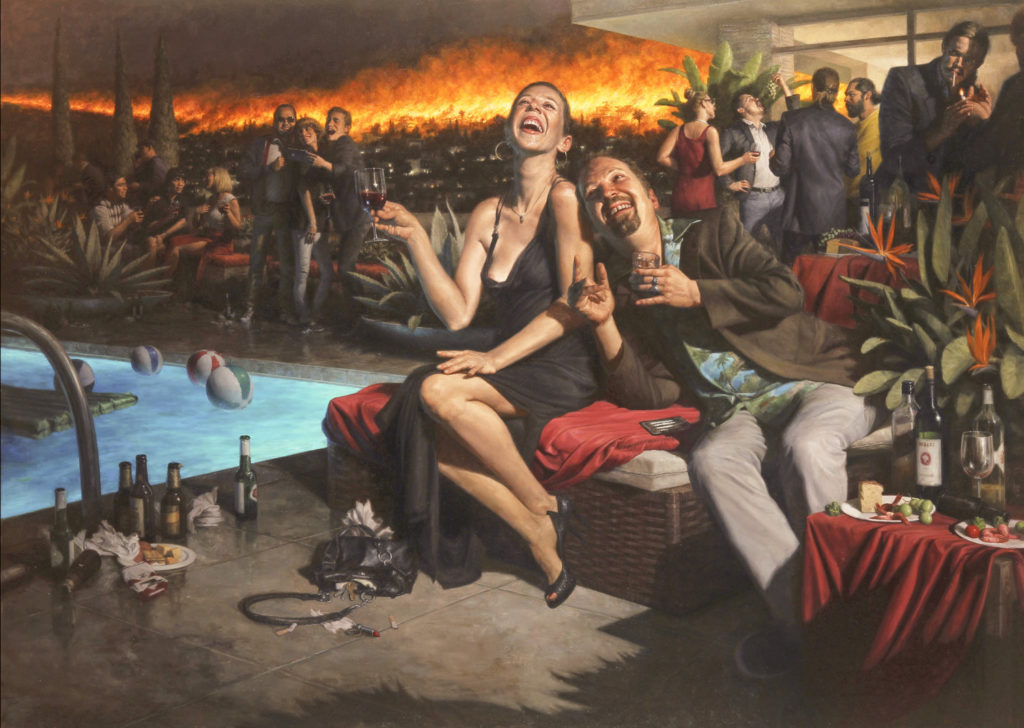
MutualArt has published my most recent piece of journalistic writing, “Carl Dobsky – Prophet of the West.” This was a really enjoyable journey into the world of prophets, as I did some background reading to understand how Dobsky’s paintings affected me. I hadn’t previously considered that 20th-century performance artists who were concerned with social criticism were the equivalent of old testament prophets. Biblical prophets often used performance and visual props to make their ideas more impressive.
In Jeremiah 19, Jehovah gives the eponymous prophet detailed directions on how to stage a performance outside the East gate of Jerusalem for the kings of Judah, and the city’s inhabitants, in which he smashed a clay pot, using the event as a parable to illustrate how the faithless city would be ravaged by the anger of their god – “Even so will I break this people, and this city.” More recently the Chinese performance artist Ai WeiWei used this same gesture in a brief video, which he titled “Dropping a Han Dynasty Urn” to emphasize his disrespect and distaste for Chinese traditional culture.
Jehovah instructed another Prophet, Ezekiel, to perform a lengthy endurance event, According to the Tanakh, he said, “Now, son of man, take a clay tablet, put it in front of you and draw the city of Jerusalem on it. Then lay siege to it: Erect siege works against it, build a ramp up to it, set up camps against it and put battering rams around it. Then take an iron pan, place it as an iron wall between you and the city and turn your face toward it. It will be under siege, and you shall besiege it. This will be a sign to the house of Israel. Then lie on your left side and put the sin of the house of Israel upon yourself. You are to bear their sin for the number of days you lie on your side. I have assigned you the same number of days as the years of their sin. So for 390 days you will bear the sin of the house of Israel. After you have finished this, lie down again, this time on your right side, and bear the sin of the house of Judah. I have assigned you 40 days, a day for each year. Turn your face toward the siege of Jerusalem and with bared arm prophesy against her. I will tie you up with ropes so that you cannot turn from one side to the other until you have finished the days of your siege.”

Doesn’t this remind you of the performance artist Chris Burden, who spent twenty-two days in February of 1972 confined naked to a bed in a Los Angeles gallery? What did it mean? The audience felt frightened. Burden described feeling like a repulsive magnet. Willful self-imprisonment, deprivation, and suffering. Compare the masochism of Burden’s action with the religious extremity of Ezekiel: – the former is an act of self-indulgence, the second, an act of a zealot.
Surprisingly, there are several books about prophets as performance artists. Here are a few:
I’m glad that painters as skillful as Carl Dobsky show that cultural criticism was not only the domain of the avant-garde, and I’m glad that he is willing to point to the hypocrisy of the West, and I’m glad that ancient prophetic performances show that members of the avant-garde were as conservatively traditional as representational artists, if more disingenuous about their intentions. The prophets of the Torah never felt the need to pretend that they were artists doing something new and radical. The prophets were the self-confessed preachers of their faith, just as many performance artists of the avant-garde were preachers of their own intersectional faith, which had nothing to do with any god.





